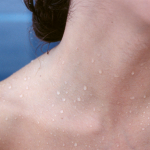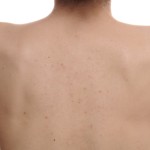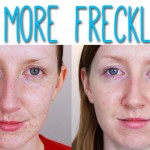How to get rid of zits
Zits is a medical condition that affects the epidermal layer of the skin resulting in painful; and pus-filled zits that leave behind uneven crater like deformities when they are burst or removed. zits is usually the result of oily skin or a high stress lifestyle exposed to dust, smoke and other harmful particulate matter present in everyday urban polluted air. zits can be painful, embarrassing and may often badly hit your self esteem and may cause much physical pain. However even after the initial bout of the zits cures, it may leave behind scars and deformities that may continue to haunt you. While these scars cannot be made to disappear overnight they can certainly be mitigated and their impact and prominence diminished and reduced beyond recognition and discernment. The following are a couple of helpful suggestions that can help you deal successfully with the scars left over from an onset of zits. Be sure to pass on any tips that you find effective to your friends, family and close relatives who may be suffering from zits and its aftermath scars themselves.
- Using fresh lemon juice
Lemon juice is an extremely common and effective solution to an onset of zits. Lemon juice has also the property of being easily available and not having any particularly strong odour that makes it all the more attractive. Lemon juice also contains natural skin bleaching properties that help to lighten the contrast between the scars of the zits and the surrounding skin, thus making the scars less obvious or discernible. Lemon juice may be applied directly and later washed off, or a lemon paste may be used as a mask that is left on overnight and is then washed off. When using lemon juice care must be taken to ensure that the skin is moisturised immediately after the lemon extract is washed off as the citric acid present in the lemon may cause the skin to dry up and to lose its water content which is naturally required for the nutrition and the nourishment of the skin particularly the facial skin.
- Using tea tree oil
Tea tree oil juice is an extremely common and effective solution to oily skin. tea tree oil juice has also the property of being easily available and not having any particularly strong odour that makes it all the more attractive. tea tree oil juice also contains natural skin bleaching properties that help to lighten the contrast between the oily skin and the surrounding skin, thus making the scars less obvious or discernible. tea tree oil juice may be applied directly and later washed off, or a tea tree oil paste may be used as a mask that is left on overnight and is then washed off. When using tea tree oil juice care must be taken to ensure that the skin is moisturised immediately after the tea tree oil extract is washed off as the citric acid present in the tea tree oil may cause the skin to dry up and to lose its water content which is naturally required for the nutrition and the nourishment of the skin particularly the facial skin

Acne facial care teenager woman squeezing pimple on white
- Applying honey
Honey is generally considered as a strong nourishing agent for the skin and as an anti-septic and anti-bacterial cleansing agent. Applying honey on the facial skin affected by zits can help to clear up the zits and the marks that zits leaves behind. Honey contains extremely potent anti-bacterial properties that soothes the skin and helps to reduce inflammation. The most effective varieties of honey are usually row honey or manuka honey.
Get rid of carpet beetles
Carpet beetles are extremely common household pests. They are extremely large insects that form and build colonies inside wood furnishing and other wood articles. Even though these insects are not parasites their presence can be extremely disruptive due to their sharp sting and colonising and invasive tendencies. Unlike termites, these insects do not eat the wood, the use it as their nests. these insects infiltrate into homes to source food and water sources. these insects nests usually in rich wood furniture. Their nests are often characterised by saw-dust- sawdust like material that are left behind by these insects when they bore into wood to make their nests. saw-dust usually contains wood shavings along with the body parts and other debris of these insects. The sighting of saw-dust near any furniture item is a sure sign of a these beetle infiltration, and must be approached and appraised with caution and concern. Other signs also include finding dung pellets around the house and particularly in cupboards and among the clothes. The following are a couple of helpful suggestions that can help you deal successfully with the menace and threat caused by these insects in your homes and property. Be sure to pass on any tips that you find effective to your friends, family and close relatives who may be facing difficulties along similar lines on account of these insects and such.








